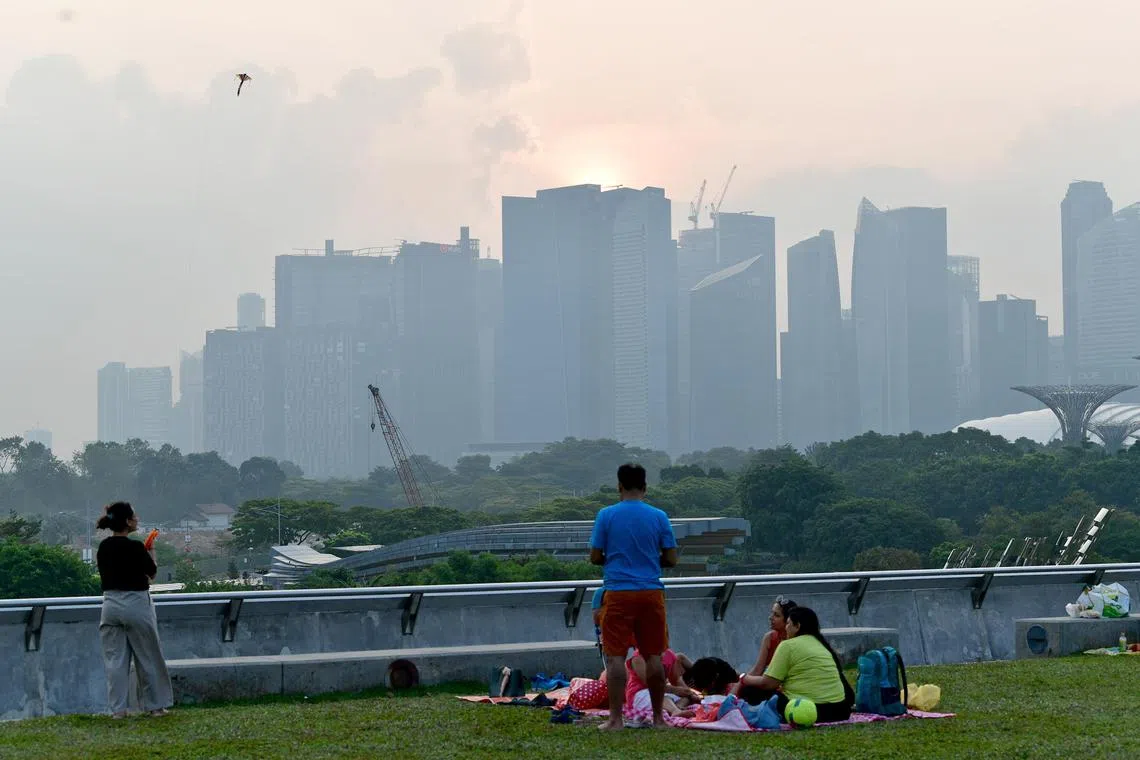NEA to issue daily haze advisories from today as likelihood of haze increases
Sign up now: Get ST's newsletters delivered to your inbox

The 24-hr PSI at 6pm on Oct 6 in the south of Singapore was 62.
ST PHOTO: JOYCE FANG
Follow topic:
SINGAPORE – The National Environment Agency (NEA) will start to provide daily haze advisories from Saturday evening after the number of hot spots in Sumatra more than tripled
In a statement on Friday night, the agency said that 212 hot spots were detected on Friday, compared with 65 on Thursday, and 15 the day before.
Satellite imagery showed smoke plumes and haze over southern and central Sumatra, with a change in wind direction on Friday afternoon causing air quality to worsen as some of the lighter haze blew towards Singapore.
“There is a likelihood of haze affecting Singapore over the coming weekend if the fires persist and wind direction is unfavourable,” said NEA, adding that it will include the 24-hour Pollutant Standards Index (PSI) forecast in its daily advisories.
The advisory can be used by the public to plan their activities and events for the next 24 hours, it said. NEA has already been issuing haze advisories to several sectors, including healthcare institutions, schools and workplaces.
On Friday afternoon, the one-hour PM2.5 in the southern and eastern parts of Singapore was at elevated levels, meaning PM2.5 concentrations were above 55 micrograms per cubic m of air. These levels remained elevated at 10pm.
“Should the situation persist, the 24-hour PSI index could enter the unhealthy range of above 100 over the weekend,” added NEA.
PM2.5 refers to fine particles – usually airborne – that are 2.5 microns or smaller and can be lodged deep in the lungs, posing severe health risks. For comparison, a strand of human hair is about 70 microns thick.
The PSI is computed based on a 24-hour average of concentration levels of PM2.5, among other pollutants.
Hotter and drier weather with the onset of El Nino
NEA expects the dry weather to persist over the next fortnight, with short showers over Singapore.
In South-east Asia, such weather causes dry, flammable Indonesian peatlands to become more susceptible to fires.
Professor Matthias Roth of the Department of Geography at the National University of Singapore said the Republic will likely continue to be affected by smoke haze from fires, particularly from south and central Sumatra, until the north-east monsoon season in November or December, when the direction of prevailing winds would come from the north instead, blowing smoke haze away from Singapore.
Additional reporting by Lynda Hong


